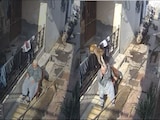The Supreme Court today backed market regulator SEBI's clean chit to the Adani Group in the Hindenburg case and said the report by the OCCRP - an organisation funded by billionaire George Soros, among others - can't be the basis for doubting the capital markets regulator's investigation.
While placing confidence in the investigation by SEBI or Securities and Exchanges Board of India, the bench comprising Chief Justice of India DY Chandrachud, Justice JB Pardiwala, and Justice Manoj Misra, dismissed the plea for a Special Investigation Team (SIT).
The Chief Justice rejected the petitioner's reliance on a news report by the OCCRP (Organised Crime and Corruption Reporting Project) without independent verification. "The reliance on newspaper reports and third-party organisations to question the statutory regulator does not inspire confidence and is not to be viewed as conclusive evidence," the court said.
The Supreme Court had originally ruled in 1988 on whether newspaper articles could be used as evidence in a case. The case involved a murder in Tamil Nadu.
Murder Most Foul
The original case was an appeal in the Supreme Court by Laxmi Raj Shetty, convicted of murdering PN Gnanasambandam, acting manager of the Karnataka Bank in what was then called Madras.
The murder was a sensational one, which caught the imagination of the press in May 1983.
According to the trial transcripts, Laxmi Raj Shetty had stayed back in the Karnataka Bank on May 20 that year, working late with his acting manager, and having earlier gained the keys to the safety vault, strangled and stabbed him inside the bank.
He then proceeded to rob Rs 14 lakh from the vault, taking the cash in a "coffee-coloured skybag", and left the crime scene in an autorickshaw.
Laxmi Raj Shetty managed to stump the police. He turned up to work as usual the next morning to allay suspicion.
The police initially drew a blank. But, in true movie style, a policeman made inquiries along with a plumber who used to sleep on the platform near the bank.
The plumber suggested that a local flower seller, Kanaka, may have some valuable information.
The police made a half-hearted attempt to find her and, learning that she was at her sister's house in Chennai's Vyasarpadi, gave up the trail.
The case was transferred to the Crime Branch and they found circumstantial evidence pointing to Laxmi Raj Shetty as the prime suspect in the murder. It was now imperative for the police to find Kanaka.
Finally, the police tracked her down and she turned out to be a clinching factor as she claimed to have seen Laxmi Raj Shetty leaving the bank around 9 pm on the night of the murder, carrying a "coffee-coloured skybag".
The Crime Branch then headed to Mangalore to catch Laxmi Raj Shetty at his father Shivram Shetty's residence. But he had fled the city by train by the time the police arrived.
On the morning of May 28, 1983, the police found Laxmi Raj Shetty roaming around in Chennai's My Lady's Park. They took him to Mangalore on May 30, 1983, to recover the loot, which was with his father. On the way, they found the father in a rickshaw, carrying boxes full of money. Both father and son were arrested.
Contradictory Newspaper Reports
The police's case was on the verge of collapse because of newspaper reports. The Indian Express Mangalore edition and three Tamil newspapers Malai Murasu, Makkal Kural and Dina Thanthi carried reports that the entire amount stolen from the bank had been recovered from Shivram Shetty's home in Mangalore and that both suspects had been taken into custody.
But the prosecution had stated that the stolen cash was recovered in Madras.
What made the case even more compelling was the fact that on May 30, 1983, then Chief Minister MG Ramachandran felicitated the key eyewitness, Kanaka, at a public function and rewarded her with Rs 5,000 in cash.
The Chief Minister, in a speech, cautioned newspapers "against the danger of conjectural reporting of such crimes during investigation, based on rumours unrelated to facts, which would not only prejudice the case but also sometimes pave the way for the offender to escape". He said that rumours were bound to sidetrack and mislead the public and even police officers concerned with solving the crime.
This discrepancy was brought on record by Laxmi Raj Shetty and his father Shivram Shetty in the Madras High Court as well as the Supreme Court; they argued that the police were lying.
However, Supreme Court Justice AP Sen categorically rejected the pleas of the Shettys, although the death sentence was converted to life imprisonment.
"We cannot take judicial notice of the facts stated in a news item being in the nature of hearsay secondary evidence unless proved by evidence aliunde. A report in a newspaper is only hearsay evidence. A newspaper is not one of the documents referred to in s. 78(2) of the Evidence Act, 1872 by which an allegation of fact can be proved. The presumption of genuineness attached under Section 81 of the Evidence Act to a newspaper report cannot be treated as proved of the facts reported therein." - observed the court.
This judgment by a single judge was later upheld by a Bench comprising Justice S Ratnavel Pandian, Justice RM Sahai, and Justice Dr AS Anand in 1994.
(Sandhya Ravishankar is a journalist)
Disclaimer: These are the personal opinions of the author.















